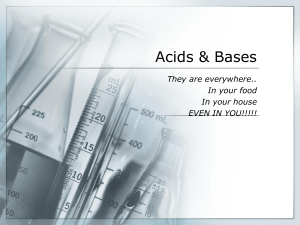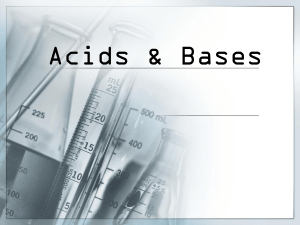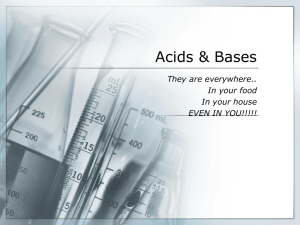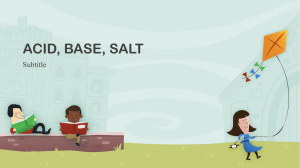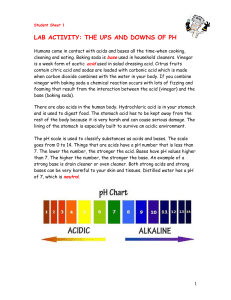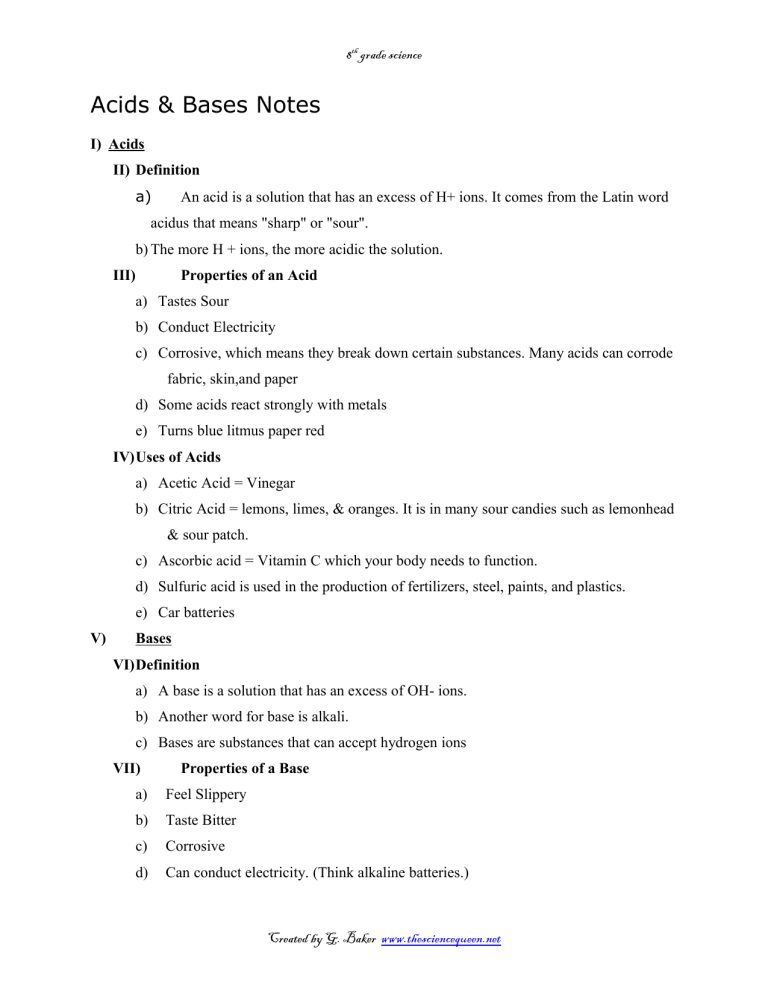
8th grade science Acids & Bases Notes I) Acids II) Definition a) An acid is a solution that has an excess of H+ ions. It comes from the Latin word acidus that means "sharp" or "sour". b) The more H + ions, the more acidic the solution. III) Properties of an Acid a) Tastes Sour b) Conduct Electricity c) Corrosive, which means they break down certain substances. Many acids can corrode fabric, skin,and paper d) Some acids react strongly with metals e) Turns blue litmus paper red IV)Uses of Acids a) Acetic Acid = Vinegar b) Citric Acid = lemons, limes, & oranges. It is in many sour candies such as lemonhead & sour patch. c) Ascorbic acid = Vitamin C which your body needs to function. d) Sulfuric acid is used in the production of fertilizers, steel, paints, and plastics. e) Car batteries V) Bases VI)Definition a) A base is a solution that has an excess of OH- ions. b) Another word for base is alkali. c) Bases are substances that can accept hydrogen ions VII) Properties of a Base a) Feel Slippery b) Taste Bitter c) Corrosive d) Can conduct electricity. (Think alkaline batteries.) Created by G. Baker www.thesciencequeen.net 8th grade science e) Do not react with metals. f) Turns red litmus paper blue. VIII) a) Uses of Bases Bases give soaps, ammonia, and many other cleaning products some of their useful properties. b) The OH- ions interact strongly with certain substances, such as dirt and grease. c) Chalk and oven cleaner are examples of familiar products that contain bases. d) IX) Your blood is a basic solution. pH Scale a) Definition b) pH is a measure of how acidic or basic a solution is. c) The pH scale ranges from 0 to 14. d) Acidic solutions have pH values below 7 e) A solution with a pH of 0 is very acidic. f) A solution with a pH of 7 is neutral. g) Pure water has a pH of 7. h) Basic solutions have pH values above 7. X) Acid – Base Reactions a) A reaction between an acid and a base is called neutralization. An acidbase mixture is not as acidic or basic as the individual starting solutions. Created by G. Baker www.thesciencequeen.net
